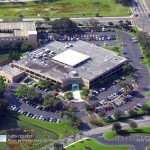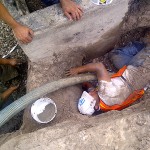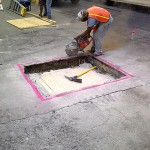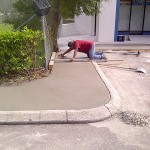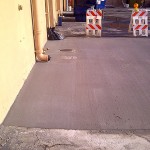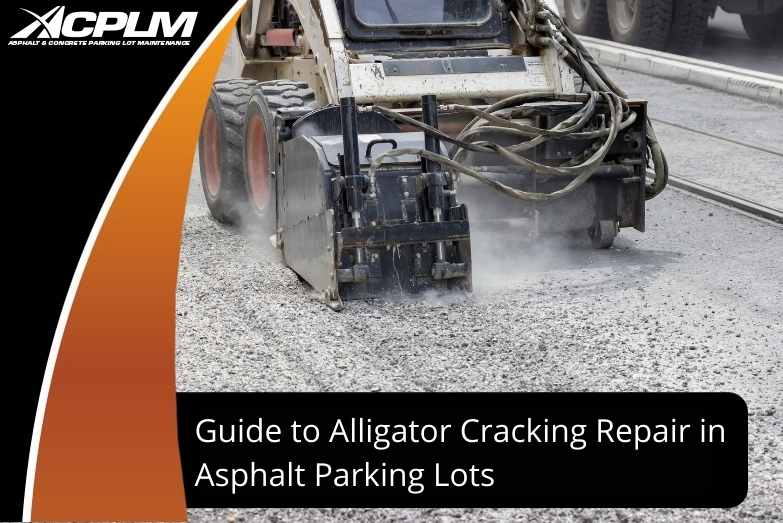
How to repair alligator cracking in your parking lot.
Asphalt pavement is popularly used in commercial parking lots to keep the property looking good and enhance customer satisfaction. Asphalt is a great choice due to its easy installation and long lifespan, which can reach about 20 to 30 years, provided that the lot is properly maintained to protect it against damage.
Alligator cracks are known as one of the most common problems a business owner faces with their parking lots. The moment these cracks become visible you will get to thinking, “What can I do? Should I have the cracks repaired, or are they not a cause of concern yet?” Unfixed cracks can easily turn into bigger and costlier problems, so it is best to get them repaired as soon as you notice them.
Continue reading to learn more about alligator cracks and alligator asphalt cracking repair services to know what to do if you spot these cracks in your parking lot.
Alligator Cracking
Alligator cracking, also called fatigue cracking, is a type of asphalt damage that resembles the look and texture of alligator scales, hence the name. It usually starts as parallel hairline cracks that eventually slowly develop into the scale-like cracks. Generally, alligator cracks may arise from different causes, including:
-
Faulty Construction
Pavements that were poorly built to begin with are more susceptible to cracks because of their weak base. You will likely see the cracks emerge around two years into the lot’s lifespan, especially with many vehicles weighing down on the pavement.
-
Water Penetration
The most common issue that calls for alligator asphalt cracking repair is water penetration caused by potholes or cracks. When left untreated, these serve as an opening for water to enter and seep into your pavement. This causes the base to erode and make different areas of the pavement prone to alligator cracks.
-
Heavy Weight before Curing
After asphalt is installed and dried, it takes about six months to a year for it to completely cure. During this period, your pavement is still fragile. While it can already be used for parking vehicles, it is sensitive to heavy loads and weights. Thus, you have to pay close attention to your pavement while it is curing and try to avoid having heavy-duty vehicles pass by or park if possible.
In some cases, poor drainage may lead to excess damage from traffic loading. Having a poor system can cause water below the pavement to weaken the materials in the base and weaken it.
-
Cold Weather
Cold temperatures can be detrimental to asphalt pavements since weather conditions like snow and ice can easily seep inside and cause cracks.
-
Inadequate Thickness
If your asphalt pavement is not thick enough to withstand external elements, it can easily lead to issues like raveling and cracking. Reputable contractors will be aware of the proper measurements needed to ensure a solid foundation, so make sure to do your research before hiring anyone to install the asphalt.
Alligator Asphalt Cracking Repair
Alligator cracks may not seem like a big problem at first, but given that the root of the problem lies deep within your asphalt, ignoring them can lead to serious consequences. Once you notice them in your parking lot, you must not hesitate to get alligator asphalt cracking repair from paving contractors. Usually, at the first sign of these cracks, applying sealcoating or a crack filler will be best to prevent the crack from expanding. However, these are only temporary solutions.
The only long term solution to repairing these cracks is to dig into the asphalt, diagnose the problem, and strengthen or reconstruct the base. The repair process may vary on a case-to-case basis. At times, it may be enough to remove the damaged sections and install a new sub-base to avoid a complete reconstruction.
However, in more severe cases, it may be more cost-effective to replace the whole surface. The fresh asphalt surface should last you about 20 years or longer, so you will not have to worry about replacing it for a while as long as you keep up with maintenance.
With alligator cracks and any other forms of asphalt damage, for that matter, it is best to get the problem fixed as early as possible. Delaying the repair will only lead to bigger problems, including:
- Accidents and Damage. Unfixed cracks can potentially damage cars and put drivers at risk of getting into accidents. Walking pedestrians can also easily trip and get injured, putting a legal burden on your business.
- Potholes. Alligator cracks that are left untreated can cause potholes, which are cavities and depressions in the pavement surface. They are not only more costly to repair but also more dangerous since they can damage vehicles and cause more severe injuries.
Preventing Alligator Cracks
As the saying goes, prevention is better than a cure. While there are some situations where you cannot prevent cracks from appearing, there are still ways to mitigate the risk and keep your asphalt sturdy and durable. The key will be to stay on top of parking lot maintenance, which you can do through the following measures:
- Ensure proper installation. Proper installation of your asphalt’s subbase is critical to avoid problems like alligator cracking. Right from the get-go, you want to make sure to choose a trusted and reputable paving contractor so that they can assess the base conditions and choose the right thickness for the asphalt.
- Maintain sealcoating. It is generally recommended to reapply sealcoating every two to three years to protect your pavement and maintain curb appeal. You can ask a professional contractor about how often you should get yours done to avoid delays.
- Prepare for cold weather. As aforementioned, cold weather can be a common culprit to various forms of asphalt damage. While you have no control over the weather, you can still prepare your asphalt by clearing debris in your pavement, filling cracks, and using cold mix asphalt to temporarily repair potholes.
- Fix parking design. Excess traffic load can be prevented by fixing your parking design. For example, you can repaint the lines to reduce the number of vehicles that can park at a time, add a vehicle limit, or put up a sign to prohibit larger and overweight vehicles from entering the lot.
- Consider drainage. Having a good drainage system is an important consideration when building an asphalt pavement. You want to make sure that water can easily drain away from the surface and flow to pipes or ditches.
Knowing how to care for your asphalt pavement can make all the difference and prolong its longevity. Whenever possible, perform the preventive measures listed above to protect your asphalt as best as you can. However, if your pavement still gets cracked, do not think twice about calling in a professional to inspect and repair it.
Contact Professional Paving Contractors for Alligator Asphalt Cracking Repair
Asphalt parking lots can be worthwhile investments when properly maintained, so do not let yours get damaged beyond repair. If you notice signs of alligator cracking in your pavement, contact us immediately at 888-959-9637 for professional alligator asphalt cracking repair. We offer full-service concrete and pavement services, so rest assured, we can restore the condition of your parking lot and bring back its appeal.








